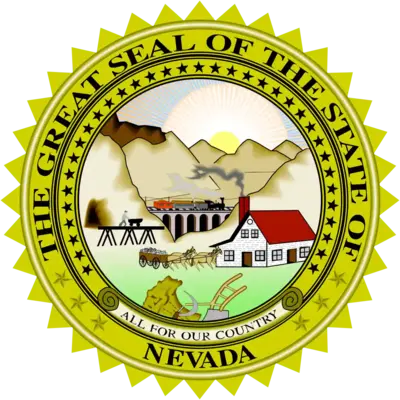Nevada Quitclaim Deed
There are several types of deeds applicable in the United States. This article will focus on the quitclaim deed, a very common and vital document used to transfer property (the land or houses) from the previous owner to the new one.
What distinguishes this fillable deed form from other related forms is that it does not guarantee that the previous owner (the Grantor) indeed has the right to transfer property to the new owner (the Grantee).
Build Your Document
Answer a few simple questions to make your document in minutes
Save and Print
Save progress and finish on any device, download and print anytime
Sign and Use
Your valid, lawyer-approved document is ready
Therefore, it is most often used in the following situations:
- moving property in the process of divorce
- between members of the same family or close friends
- between related entities
That means the document is applied where there is trust between the signatories.
Try using our form-building software to create this document. Below, you will also find guidelines for filling out the free printable quitclaim deed form.
Quitclaim Deed Laws and Requirements in Nevada
In the United States, there are practically the same laws governing the creation and use of this form. However, there are some differences, so let’s look at the Nevada laws regarding this issue.
Laws
You should pay attention to § 111.105 and § 111.312 of State Law. There you can find the main provisions regarding this and similar forms.
Below are the basic requirements you need to know to write a legal document.
Signing Requirements
The form must have the grantor’s signature . The signing must take place in the presence of a notary public, who must also fill out their part of the document and append the seal and signature.
Recording Requirements
After filling out and signing, the form must be sent to the Recorder’s Office in the County to which the real property belongs.
Format Requirements
In addition to the form itself, you must fill out a cover sheet and attach to the document.
The Cover Sheet in Nevada must contain the following information:
- APN number
- Title of the form
- Who requests recording
- Details (name and address) of the person who will receive the document after registration
- Details (name and address) of the person who will receive a tax statement
Fees
Some counties require tax payment to register the form. The application of this tax and the amount of payment varies from location to location, so check the County’s website for the latest information.
Declaration of Value
In addition to the discussed form, you also need to fill out the Declaration of Value. This document is used to fix the price of a property. Without it, your deed will not be registered.
How to Fill Out and File a Quitclaim Deed in Nevada
1. Fill in the Form Placeholder and Recipient Details
After the words “FILED FOR RECORD AT REQUEST OF,” write the name of the person filling out the form.
Further, after “WHEN RECORDED RETURN TO,” enter details of the person who should receive the document after passing the registration procedure in the Recorder’s Office:
- name
- address
- city
- state and zip
2. Identify the Grantor
Enter the full name of the grantor. According to the law, it is possible to have several grantors, and a legal entity can also act like a Grantor.
3. Place the Amount
After the words “consideration of,” you need to write the amount paid to the Grantor. Sometimes, the process takes place without transferring money. In this case, write zero.
4. Identify the Grantee
Enter the full name of the grantee.
5. Name the County
You need to write the name of the county where the real property is located.
6. Describe the Property
It is necessary to indicate the address and the legal description of the property in full.
7. Sign the Document and have it Certified by a Notary
Local laws demand that the grantor signs the form in the presence of a notary public. The notary fills out part of the document and also appends their signature, thereby certifying it.
8. Register the Form
Next, send the document and its attachments to the Nevada County Recorder’s Office. You need to select the Office where the real property is located. Check in advance if your county has any special registration rules or fees that must be paid.

Various other fillable Nevada templates available for download and that can be personalized in our hassle-free document builder.